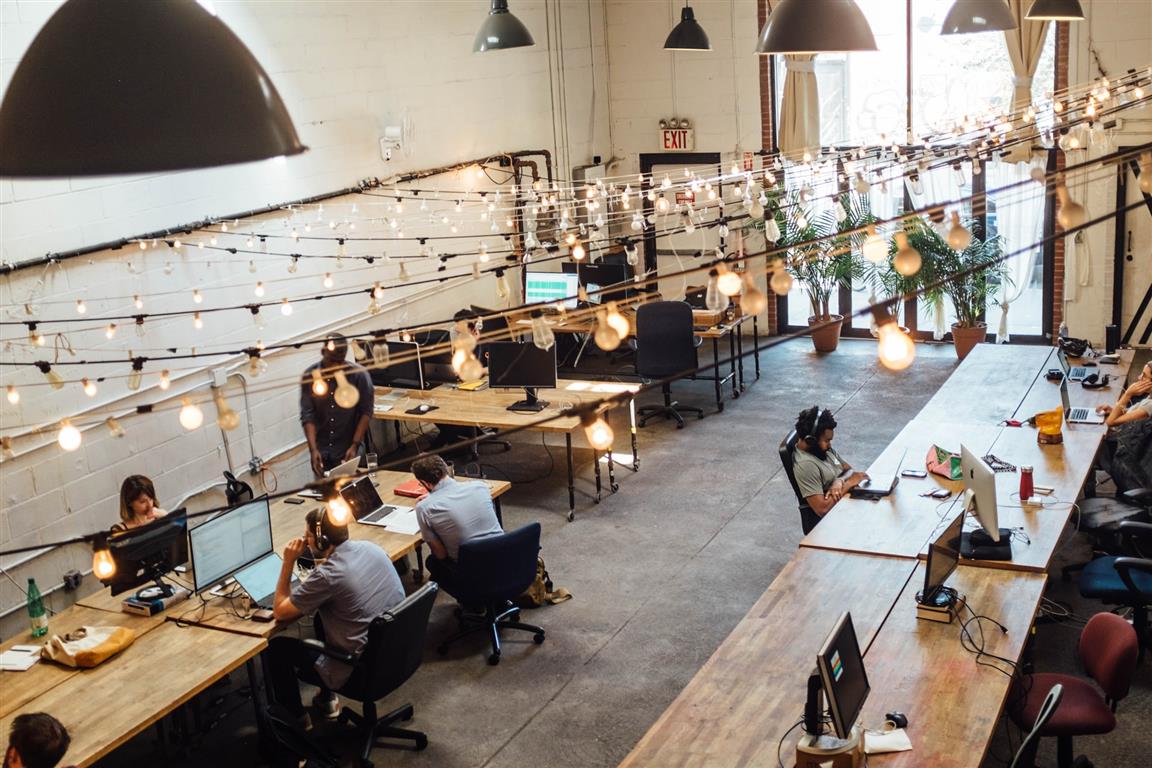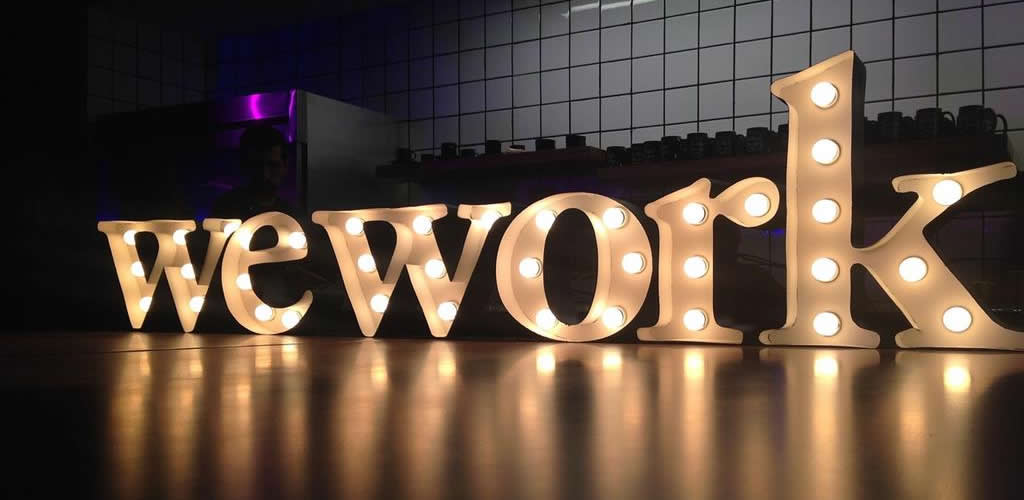The rise of flexible working and hot-desks

Successive lockdowns have forced companies to adapt their way of working the office. The most creative solution to emerge from all of these radical changes to the traditional work environment is the rise of the hot-desk as a flexible work arrangement for employees. It is an effective solution for coping with the effects of the Covid-19 pandemic, but also to the employees requests, and it would therefore make sense to implement this strategy post-pandemic.
The Covid-19 pandemic and the worldwide lockdowns forced many workers to abandon their offices and the watercooler gossip in favour of working from home.
Now as the world adapts to working with the new norm, specific trends are emerging, such as employees wanting more work flexibility. Employers are having to consider new non-traditional attitudes as their businesses resume and their workforce prepares to return to work in person. Other unique approaches include changes to the way teams are organised, new repurposed work areas and varied scheduling to meet flexibility demands.
What statistics on flexible arrangement tell us
In 2018 already, a survey conducted by Zenefits (Workest) survey found some surprising data:
- 78% of employees who took the survey said work arrangements that were more flexible made them more productive. It gave them the means to work to a capacity that best suited them. Employees want the freedom to make certain work choices to be more productive, efficient and be more comfortable.
- 73% of employees claimed work satisfaction increased if they had flexible work agreements in place, like hotdesking. Happiness at work increased remarkably when employees had freedom, comfort and flexibility.
- Only 20% of employees had no tools to make flexible work arrangements convenient and productive.
- However, even though the survey weighed heavily in favour of hot-desking and flexible schedules for employees, almost one in five employers are facing major hurdles in implementing it because they don't have the infrastructure and tools (especially IT infrastructure). Despite this, almost 67% of small companies were able to offer their workers some version of flexibility with remote working.
- A whopping 77% of potential jobseekers consider flexible work arrangements important when applying for new jobs as this trend becomes more mainstream.
- Almost 75% of potential workers actually consider work flexibility and hot desking an incentive to join a company that offers those perks.
Working from home vs the office vs hot-desking
Different ways of working for a company can be classified into 3 categories:
- Office: companies that cannot operate using hot desks are going back to the conventional office spaces.
- Hybrid: some companies have introduced flexible working by scheduling a hybrid working strategy where workers come into the office on certain days (hot desking) and work from home on other days. Workspaces are used on demand and there is no longer one desk-one employee.
- Remote: employers that want to continue with the work-from-home option can evaluate their employees’ needs and help create the office environment at home. Workers can opt to work from home or in a shared space of a company specialising in hot-desking, with remote access.
There are particular real estate companies, like WeWork, Regus orTechNexus that specialise in hot desk office space rentals and offer employers various options as they resume operations.
READ ALSO: Remote working and its impact on expats
Hot-desking: the end of the permanent desk
Not all workers are able to work productively and effectively from home due to various reasons, like having young children or insufficient space. The main idea would be for the company to understand the requirements of the various workers and implement strategies to facilitate those needs to maximise productivity.
Hot-desking is an organizational workarea system (also named co-working) where desks are used by different people at different times, on an ad hoc basis. It means an employee can find any available desk or workstation and work at that location for the day.
Depending on the different types of work being done in the same venue, companies can restrict certain areas for certain types of work, e.g. placing all workers from a single department in one area. This can also look like designated "quiet zones" for some departments.
A variation of hot desking (which are open/available desks that employees can walk up to claim) is hotelling where employees can reserve a specific desk or workstation for the duration of their requirements. These can be conference rooms, collaborative spaces, phone banks.
Each hot-desk comes with its own power outlets and WiFi connection. Certain hot-desk venues also give you access to shared lounges, kitchens, brainstorming areas, conference rooms, and a global network of other professionals made with members. Users can place personal belongings on the desk for a limited time or some facilities also provide lockers to store valuables.
Prices for renting out a hot desk varies depending on the location of the office and the amenities on offer. Here are a few examples accross the world:
- In central London it can set you back £400/month whilst near Regent's Park it costs £188.
- In Paris, you can find between €200 and €500/month/person depending on the service (lounge area or desks).
- Sydney's hot desks cost an average of $38 per hour or $105 as the daily rate.
- Perth has an hourly rate of $30 whilst Brisbane with $18. Melbourne has the lowest hot desk hourly rate at $14.
Pros and cons of hot-desking
Advantages
- Decreased overhead expenses for the employer.
- Most hot desk venues provide necessary office equipment, like printers, etc.
- Making better use of the office space.
- Happier, productive, efficient and satisfied workforce.
- Attractive to new talent and improved company culture.
- A large portion (almost 40%) of standard office space is often unused daily, due to employee training, business trips or vacation. It is not cost effective to pay for the extra real estate space if it is not being utilized. Hot desking offers optimization of office space.
- Shared desks and co-working encourage an open work environment, which improves communication and collaboration amongst the team.
- It also keeps shared spaces tidier and free of personal belongings, which in turn facilitates cleaning and sanitization against Covid 19.
- Freelancers, startupers and consultants find this manner of working flexible and cost effective because they don't have to commit to a long term expensive lease.
- For people working alone it combats the isolation of working alone from home and you work in the company of other professionals which gives you opportunity for collaboration.
- Companies can hire remote workers on demand without having to rent out more office space.
Disadvantages
- Companies may have to rethink their IT strategies and this may come at a significant financial cost.
- Not all workers thrive in an open office— some require their personal space surrounded by their belongings to do their best work.
- Distractions are plentiful if the “office scenery” changes daily.
- Hot desks could upset the applecart with respect to office "hierarchy". Not all senior employees are happy to sit next to the intern.
- Communication disruptions could occur if you need to see someone in person and they’re seated at a different location every day.
- Space may be limited and storage is virtually non-existent with hot desks.
READ ALSO: What protection of remote workers during the pandemic?
The difficulties of this industry: example of WeWork
There are many hot desk companies that have sprung up in response to the co-working phenomena. WeWork is one of the earliest and most prominent ones because it rose in popularity but nosedived during the pandemic.

It was founded in 2010 with some big-name investors at a time when hot desking was a novel and fledgling idea. Nowadays, WeWork has office spaces in 86 cities across 32 countries. Their office spaces are all luxurious and located in expensive areas of the various cities they’re located in.
In 2019 the occupancy rate of WeWork fell to 80% because their rates were too high for start-up businesses and remote workers. They dropped their rates to attract more clients, but in that year they lost $ 2 billion alone! They could not expand their business without incurring proportionnaly more expenses. The pandemic also saw more affordable competitors arise in the face of flexible space and hot desking. These are only some of the many reasons WeWork is flailing as a company.
Whether hot desking takes off or not, we can be sure that working life will not resume as normal pre-pandemic and that there will be massive paradigm shifts when it comes to workers, their needs and the new office environment.
READ ALSO: Remote working as a new normal
Share your experience, participate in the discussion and leave comments in our forum HERE.
Expat Mum in the Desert and content writer for EasyExpat.com